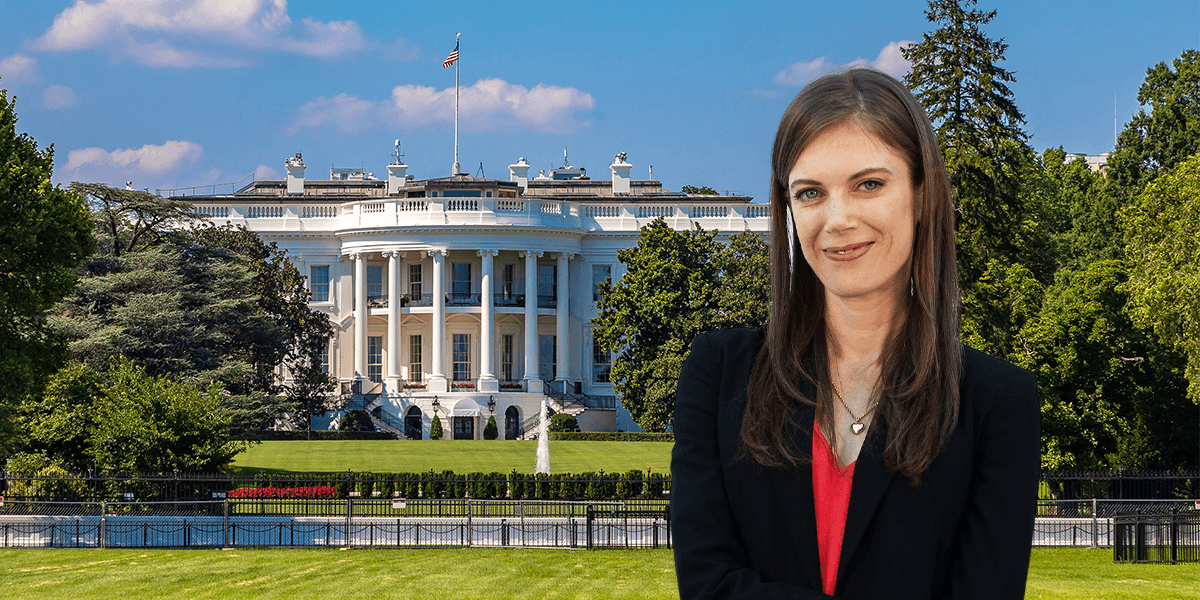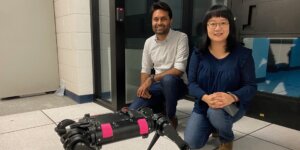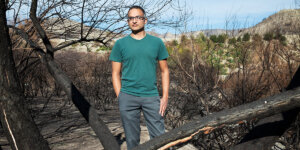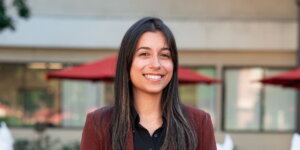
Kelly Sanders, Dr. Teh Fu Yen Early Career Chair and associate professor in the USC Sonny Astani Department of Civil & Environmental Engineering
From supplying net-zero electricity to tackling emissions from transportation, agriculture and heavy industry – President Biden’s goal to achieve a 50-52 percent drop in U.S. greenhouse gas pollution by 2030 (compared with 2005 levels) is undeniably ambitious.
The team at the White House Office of Science and Technology Policy (OSTP) is tasked with creating bold visions, unified strategies and effective, equitable programs for science and technology. The office provides advice to the President, federal departments and Congress, and engages with industry, other government agencies and academia.
Among the newest members of the office is Kelly Sanders, Dr. Teh Fu Yen Early Career Chair and associate professor in the USC Sonny Astani Department of Civil & Environmental Engineering, who has been appointed as the assistant director for energy systems innovation within OSTP’s Industrial Innovation team.
Sanders will apply her in-depth knowledge of energy systems to advance the government’s clean energy and economic priorities. She is working to accelerate the adoption of emerging technologies that can facilitate the nation’s ambitious decarbonization goals.
It’s a daunting task, but nothing Sanders isn’t prepared for. Named in MIT Technology Review’s “35 Innovators Under 35” for her contributions to the energy field, recognized with an NSF Early CAREER award and regularly called upon by national media outlets to advise on current energy and climate issues, Sanders is something of an academic wunderkind. Back in her hometown of Washington D.C., she’s now working at the nexus of national policy.
We caught up with Sanders to chat about her duties, goals and what she loves about being a systems thinker; for Sanders, a connected world is a source of infinite fascination and potential for problem-solving.
Firstly, congratulations! What does your new role involve?
K.S: My role within OSTP is to advance climate change mitigation goals by advising on strategies to accelerate the adoption of early-stage clean energy and grid modernization technologies. I work within OSTP’s Industrial Innovation team because there are tight synergies between the Administration’s energy and industrial policies – for example, through President Biden’s Inflation Reduction Act which facilitates national decarbonization strategies, as well as its CHIPS and Science Act and the Bipartisan Infrastructure Law, which collectively make big investments in infrastructure and domestic manufacturing.
While I’ll be focusing on clean energy and electrification priorities, my work is always within the context of a broader suite of economic and social priorities. In addition to cultivating the development of new technologies, industries and infrastructure to bolster U.S. leadership and competitiveness across the global energy transition, I’ll also be addressing the question of how we support that global reach by building up U.S. manufacturing, investing in the domestic workforce, strengthening national security and preparing the grid to be resilient against the challenges imposed by climate change and extreme events.
What types of activities will you be engaged in at the day-to-day level?
K.S: My day-to-day tasks involve technical research, modeling and analysis, as well as synthesizing insights in reports, briefings and talking points for my OSTP team and other senior White House officials. Much of this work is focused on identifying the key technologies that could make a difference in achieving our clean energy goals, pinpointing the various hurdles that may be preventing these technologies from being integrated within the U.S. economy and strategizing how we might lower the barriers to entry. My role is very collaborative; each day, I am working with teams across the White House, other government agencies and the private sector to advance our goals.
Your position at OSTP is extremely competitive – what do you think made your application stand out?
K.S: I was honored to be put forward for the role and to be selected after multiple rounds of interviews. I would say that the highly interdisciplinary nature of my research makes me a fairly unconventional engineer, well suited to the broad-ranging policy priorities of OSTP’s Industrial Innovation team.
In short, I’m a systems thinker: I love to connect the dots. I’m fascinated by the fact that the energy system provides the backbone of the global economy. It impacts everything we do and care about: our quality of life, our personal finances, our national security, our relationship with other countries and geopolitics. It also affects our environment and climate, the area I have spent most of my career thinking about. The challenge of studying energy systems is that you can’t optimize any one of these factors in a vacuum – they’re all interconnected and the stakes are high.
This systemic outlook is inherent to civil and environmental engineering. Rather than selecting a narrow aperture and focusing on one technology or problem, we work best when we expand our vision and take account of the wider context: road networks, power networks, water networks and more. These systems permeate society and provide critical services.
This mentality prepares us to conceive of the embedded aspects of climate change and address problems at scale – it’s valuable training for a position like this, which requires deep knowledge as well as a breadth of understanding.
In what ways does the role at OSTP support your longer term research goals?
K.S: As academics, we don’t always get the chance to test our expertise within the context of real-world challenges and realities. There are forces beyond technology and economics that can hinder progress on climate priorities, which aren’t always accounted for in academic analysis. There can also be a delay in accessing information – we’re often sourcing from peer reviewed articles that can take months or years to publish findings. I’m excited to talk to experts across diverse domains, to have greater access to practitioners on the ground and to understand what goes on behind the scenes of the policy making process so that my research can be even more impactful.
When you’re in Washington D.C., you feel the spirit of the White House and the Capitol – you’re at the center of so much policymaking, so much history. To be part of that and to bring new knowledge and experience back to my students… It’s a once-in-a-lifetime opportunity.
Published on April 2nd, 2024
Last updated on May 3rd, 2025













